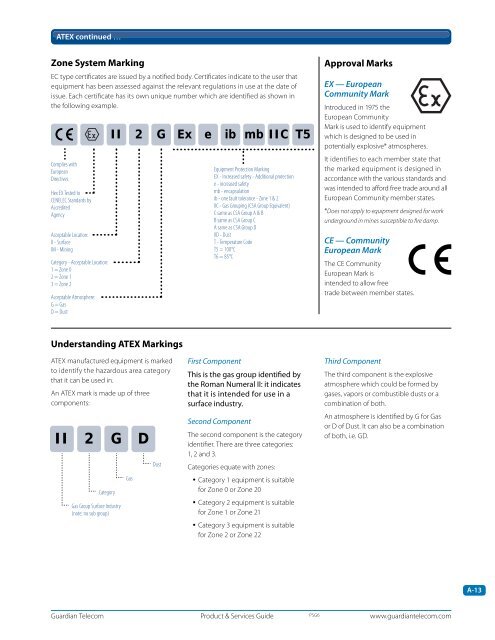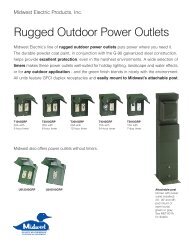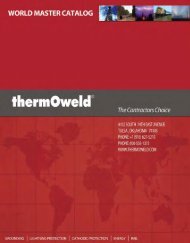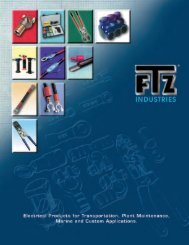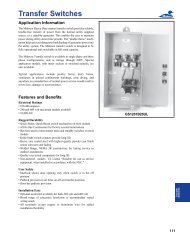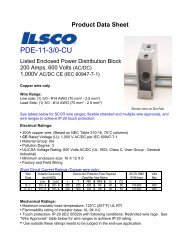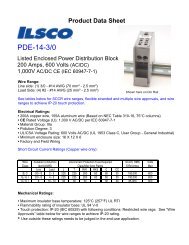Telephones - Theovine
Telephones - Theovine
Telephones - Theovine
You also want an ePaper? Increase the reach of your titles
YUMPU automatically turns print PDFs into web optimized ePapers that Google loves.
ATEX continued …<br />
Zone System Marking<br />
EC type certificates are issued by a notified body. Certificates indicate to the user that<br />
equipment has been assessed against the relevant regulations in use at the date of<br />
issue. Each certificate has its own unique number which are identified as shown in<br />
the following example.<br />
Complies with<br />
European<br />
Directives<br />
Hex EX Tested to<br />
CENELEC Standards by<br />
Accredited<br />
Agency<br />
Acceptable Location:<br />
II - Surface<br />
IM - Mining<br />
Category - Acceptable Location:<br />
1 = Zone 0<br />
2 = Zone 1<br />
3 = Zone 2<br />
Acceptable Atmosphere:<br />
G = Gas<br />
D = Dust<br />
II 2 G Ex e ib<br />
mb IIC T5<br />
Equipment Protection Marking<br />
EX - Increased safety - Additional protection<br />
e - increased safety<br />
mb - encapsulation<br />
ib - one fault tolerance - Zone 1 & 2<br />
IIC - Gas Grouping (CSA Group Equivalent)<br />
C same as CSA Group A & B<br />
B same as CSA Group C<br />
A same as CSA Group D<br />
IID - Dust<br />
T - Temperature Code<br />
T5 = 100°C<br />
T6 = 85°C<br />
Approval Marks<br />
EX — European<br />
Community Mark<br />
Introduced in 1975 the<br />
European Community<br />
Mark is used to identify equipment<br />
which is designed to be used in<br />
potentially explosive* atmospheres.<br />
It identifies to each member state that<br />
the marked equipment is designed in<br />
accordance with the various standards and<br />
was intended to afford free trade around all<br />
European Community member states.<br />
*Does not apply to equipment designed for work<br />
underground in mines susceptible to fire damp.<br />
CE — Community<br />
European Mark<br />
The CE Community<br />
European Mark is<br />
intended to allow free<br />
trade between member states.<br />
Understanding ATEX Markings<br />
ATEX manufactured equipment is marked<br />
to identify the hazardous area category<br />
that it can be used in.<br />
An ATEX mark is made up of three<br />
components:<br />
II<br />
2 G<br />
Category<br />
Gas Group Surface Industry<br />
(note: no sub group)<br />
Gas<br />
D<br />
Dust<br />
First Component<br />
This is the gas group identified by<br />
the Roman Numeral II: it indicates<br />
that it is intended for use in a<br />
surface industry.<br />
Second Component<br />
The second component is the category<br />
identifier. There are three categories:<br />
1, 2 and 3.<br />
Categories equate with zones:<br />
Category 1 equipment is suitable<br />
for Zone 0 or Zone 20<br />
Category 2 equipment is suitable<br />
for Zone 1 or Zone 21<br />
Category 3 equipment is suitable<br />
for Zone 2 or Zone 22<br />
Third Component<br />
The third component is the explosive<br />
atmosphere which could be formed by<br />
gases, vapors or combustible dusts or a<br />
combination of both.<br />
An atmosphere is identified by G for Gas<br />
or D of Dust. It can also be a combination<br />
of both, i.e. GD.<br />
A-13<br />
Guardian Telecom Product & Services Guide PSG6<br />
www.guardiantelecom.com


